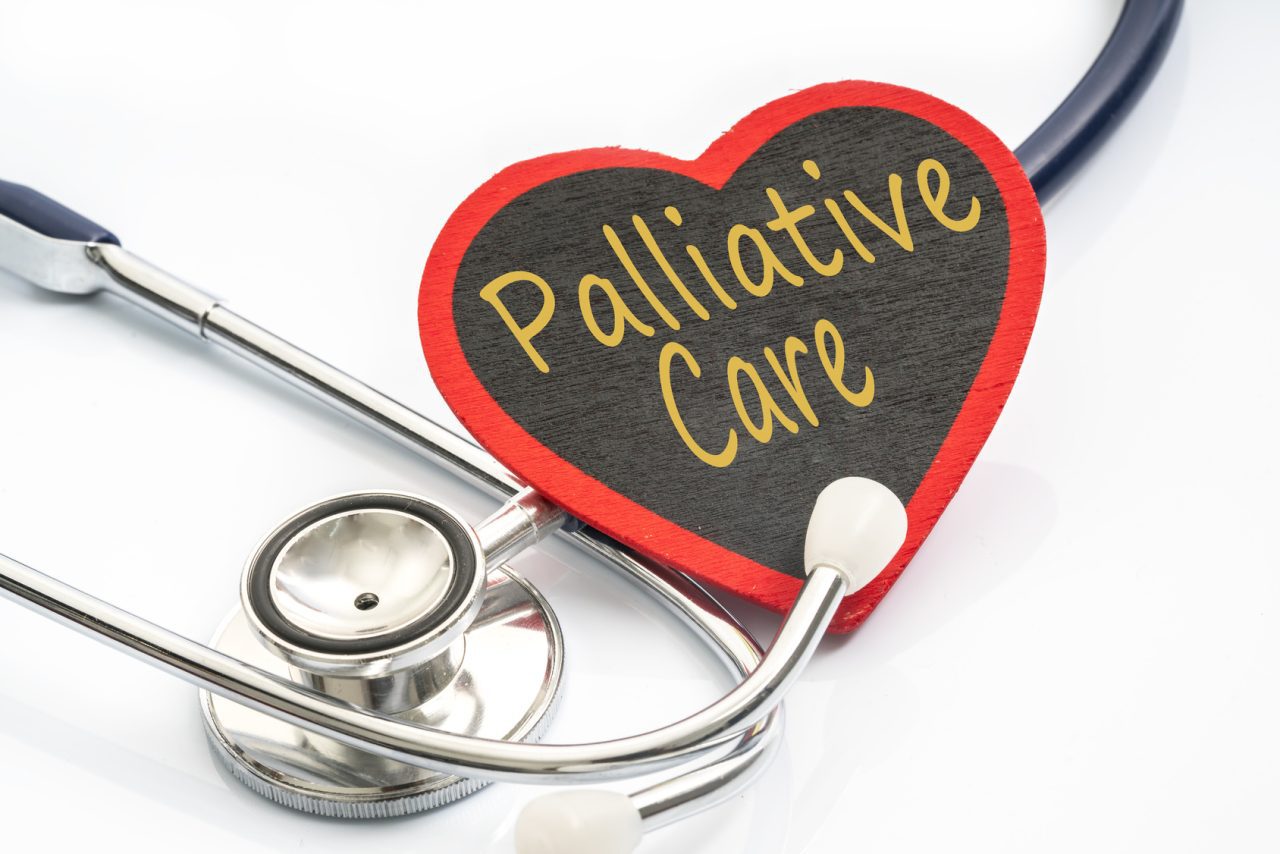
Self-advocacy starts with believing that you are worthy of love, respect, dignity, and autonomy. This belief will animate everything you do and will affect how others will believe, perceive, and respond to you. It will affect the degree to which others will be able to help you, including your medical team and support systems. Other people can only help us to the degree that we value ourselves and are willing to invest in our own personal well-being. Your self-image and appreciation will affect how well you are able to speak up for yourself and your rights as a well-deserving person and patient. You deserve the time to express your concerns and ask questions, with an expectation of being listened to, supported, and respected without prejudice. And you have a right to be given all of your information regarding your health, so you can make informed decisions regarding your health and livelihood. Unfortunately, we don’t always get that from our medical professionals or the government agencies that we spend a lifetime paying into for such provisions, so we must be ready to fight for it!
EMPOWER YOURSELF THROUGH EDUCATION
 Learn and understand your diagnosis. Researching and educating yourself is the single most important tool available to you in self-advocacy. Most of the information available is going to be found online in various articles, websites, videos, and within online support groups. Finding accurate, up-to-date, and reputable sources is paramount. Here at Chiari Bridges, we try to reference the studies and peer-reviewed articles behind our information, so you know the official sources that the information came from and will be better able to justify your requests and concerns to your doctors. Regardless of your source, be prepared to find a lot of conflicting information. These contradictions mainly exist because Chiari and its co-morbid conditions are being researched like never before, so it’s an exciting time, but that fails to give much comfort to those having to fight with their doctors on the existence of every symptom they face.
Learn and understand your diagnosis. Researching and educating yourself is the single most important tool available to you in self-advocacy. Most of the information available is going to be found online in various articles, websites, videos, and within online support groups. Finding accurate, up-to-date, and reputable sources is paramount. Here at Chiari Bridges, we try to reference the studies and peer-reviewed articles behind our information, so you know the official sources that the information came from and will be better able to justify your requests and concerns to your doctors. Regardless of your source, be prepared to find a lot of conflicting information. These contradictions mainly exist because Chiari and its co-morbid conditions are being researched like never before, so it’s an exciting time, but that fails to give much comfort to those having to fight with their doctors on the existence of every symptom they face.
Know your rights as a patient and your doctor’s legal responsibilities. Rights and responsibilities are often governed by state and federal laws and are outlined and included in the paperwork given to you from medical practices, health care systems, hospitals, and facilities. Your providers will likely require you to sign that you agree to and understand them. In doing so, these are legally binding for both parties. Thus, you will want to make sure you understand them fully before signing them and make sure you get a copy for your own records (if they don’t give them to you, don’t be afraid to ask for a copy).
Learn and understand your health insurance. Know what your policy does and does not cover. Become familiar with which doctors, medical services, and facilities are covered. Find out about copays, deductibles, out-of-pocket costs, and other relevant information. Find out if your policy includes out-of-network benefits and associated costs; including out-of-state benefits. If no out of network/or state benefits exist, find out if exceptions can be made. Almost all insurance plans do have some form of exceptions and/or appeals process for this very purpose. There are commonly two stages of appeal, an internal review (your appeal is reviewed in-house) and an external review (where you are specifically asking for a review made by an outside organization that has not been a part of your provision of care and has no conflict of interest).
Learn about Advance Directives, Living Wills, Durable Healthcare Power of Attorneys, etc. You will want to familiarize yourself with all of these and decide what, if any, is right for you.
EMPOWER YOURSELF BY DEVELOPING SKILLS AND ACCESSING TOOLS
Communication Skills and Tools. Learning to know when and how to communicate your needs and desires to others is important, especially when you have a limited amount of time with your doctor. Brevity, clarity, relevancy, problem solving, negotiating and preparation are key skills and tools. It might be beneficial to sit down beforehand and write the specific points that you want to address, and what your ultimate goal is in the appointment. Maintaining a respectful dialogue is always of utmost importance. Keeping your emotions under control is crucial. Otherwise, your doctor might take you less seriously or assume your symptoms stem from psychological causes.
 Medical Records. As a patient, it is important to always obtain a copy of your medical records and review them for accuracy. It was once thought amongst medical professionals that a patient’s medical records were solely for doctors to communicate amongst themselves. Some medical professionals still hold to this antiquated ideology and become obviously disgruntled that you have chosen to exercise your patient right to not only obtaining your medical records but also, demanding they are 100% accurate. What is listed in those medical records will be used to treat you. It is important they are accurate and are corrected if they are not.
Medical Records. As a patient, it is important to always obtain a copy of your medical records and review them for accuracy. It was once thought amongst medical professionals that a patient’s medical records were solely for doctors to communicate amongst themselves. Some medical professionals still hold to this antiquated ideology and become obviously disgruntled that you have chosen to exercise your patient right to not only obtaining your medical records but also, demanding they are 100% accurate. What is listed in those medical records will be used to treat you. It is important they are accurate and are corrected if they are not.
Keep copies of all imaging and radiology reports. Images are not kept forever, nor are other medical records. Sometimes doctors do not tell you some of the things found in your imaging/reports and other tests because they deem them “incidental” or irrelevant. Sometimes, doctors miss what is obviously clear altogether. Many Chiarians go through years of misdiagnosis before properly being diagnosed. Often, a look back through your medical records will show patterns and assist in the discovery, diagnoses, and treatment.
Patient Portals. With the advent of portals being used in many practices and facilities, patients have easier, free access to many of their medical records now. The same rules apply to the information retained in the portals in regard to how long they are kept there. Any conversations you might have with your provider through the portals should be saved as well.
Organization and Preparation. Every person has their own way of “organizing.” This extends to your medical records keeping as well as preparation for appointments. There are some free online resources to help you with this organization. Some like to make a “chart” for their medical records by creating a binder with tabs. Some use digital charts/record-keeping tools for online free or for purchase. Many apps for phones exist to help as well. However you decide to organize is up to you, but is an invaluable tool available to arm and equip yourself in self-advocacy.
Self-Care and Coping Skills. We often underestimate the necessity of self-care; as well as the power of developing positive, healthy coping skills and techniques. Self-care is pretty standard for all: getting proper nutrition, rest, appropriate and safe exercise, taking meds faithfully, taking time for recreation and refreshment, and tending to the beauty that is your body, mind, and spirit. Everyone has ways they “cope” in life in general and within the framework of chronic illness. It’s important to find the ones that work for you.
EMPOWER YOURSELF BY FINDING THE RIGHT DOCTOR(S)
Self-Education. Self-education precedes the ability to find a good doctor. If you are not aware and knowledgeable about your diagnoses and disorders, you will not recognize whether a doctor is the right one for you. Educate yourself on your conditions and on what your potential doctor has published on your conditions: What are their credentials, experience, affiliations, number of cases they have treated, and specialties and sub-specialties? Look for any official publications and scientific journals or other research that your provider may have written. Additional information can be found online through state records and other sources regarding your physician.
Ask family, friends, and other medical professionals. Find others who have PERSONAL FIRST-HAND doctor/patient experience with the potential provider. Keep in mind a doctor can be a great fit for one patient but not for another. You can also ask for the opinion of your present doctors or other medical professionals.
Getting 2nd Opinions and When to Find Another Doctor. It is never wrong, always wise, and completely within your rights as a patient to seek a second opinion (or more). If you are facing a potential surgery or procedure that could be risky and/or permanent, it is prudent to get multiple opinions. It is your right to ask for and change doctors at any time or facility. You do not need to give any reason nor explain yourself, though you will likely be asked to do so. Be careful not to burn bridges or become “blacklisted.” Always find a new doctor before leaving the old one.
EMPOWER YOURSELF BY DEVELOPING YOUR SUPPORT SYSTEM AND GETTING HELP. Being a self-advocate does not mean “going it alone.” Developing and surrounding yourself with a support system is vitally important and many consider it to be “their lifeline” to keep going.
 Local or online support groups. Finding the right local or online group can be just as important as finding the right doctor and educating yourself. Remember, there is a lot of accurate and inaccurate info out there (even amongst our medical professionals). A support group is only as good the respect they have for you in your fight. If they respect the Chiari fight, it will be evident in the way they treat one another and in the accuracy of the information they espouse and share. Online groups each tend to have a different set of rules that members are expected to follow: some allow and encourage advice and recommendations amongst their members, and some do not allow it at all. Not every group will be the right fit for each Chiarian, but you can expect any good group to be kind, supportive, respectful, accurate in the information disseminated, gentle correction of inaccurate information shared respect of your autonomy, choices, and a zero-tolerance for bullying.
Local or online support groups. Finding the right local or online group can be just as important as finding the right doctor and educating yourself. Remember, there is a lot of accurate and inaccurate info out there (even amongst our medical professionals). A support group is only as good the respect they have for you in your fight. If they respect the Chiari fight, it will be evident in the way they treat one another and in the accuracy of the information they espouse and share. Online groups each tend to have a different set of rules that members are expected to follow: some allow and encourage advice and recommendations amongst their members, and some do not allow it at all. Not every group will be the right fit for each Chiarian, but you can expect any good group to be kind, supportive, respectful, accurate in the information disseminated, gentle correction of inaccurate information shared respect of your autonomy, choices, and a zero-tolerance for bullying.
Workplace Support. There are laws that protect you and that can even provide assistance and support within the workplace that you should familiarize yourself with. The Family and Medical Leave Act of 1993 (FMLA) is a federal law in the United States requiring employers to provide employees with up to 12 weeks of job-protected, unpaid leave for qualified medical and family reasons annually; but you must file it as FMLA leave to get the protection.
School Support. There are programs and opportunities within schools that you should also familiarize and protect yourself with if your Chiarian is in school. In the United States, the US Department of Education has worked hard to incorporate federal laws to help reduce discrimination and increase structured programs to help ensure the success of students with disabilities. As a result, most schools, including colleges, have programs where students with disabilities can get special allowances for recording devices, note takers, removal of time limits on tests, etc. These programs are usually subsidized at a state level and have different names depending on your state, but a school counselor should be able to point you in the right direction. These protections may be limited in privately funded colleges and universities that do not receive any public funds.
Support and Assistance Programs. There are hosts of programs, assistance, and support to be found in nearly every local area (through county trustees, charitable organizations, and  churches), as well as state and federal programs. Just are few examples of help available are assistance with mortgage, rent, utilities, food, clothing, medical bills, medical insurance, free or reduced-cost prescriptions, holiday assistance, back-to-school, free or reduced-cost dental clinics, pro-bono legal help, cash assistance programs, etc.
churches), as well as state and federal programs. Just are few examples of help available are assistance with mortgage, rent, utilities, food, clothing, medical bills, medical insurance, free or reduced-cost prescriptions, holiday assistance, back-to-school, free or reduced-cost dental clinics, pro-bono legal help, cash assistance programs, etc.
Professional Advocate Support. While self-advocacy is important, you might find that you are needing more help than you can accomplish alone. Managing your health can be confusing and overwhelming. Sometimes it can be hard to get your voice heard by the healthcare professionals around you. The healthcare system itself is very complicated. If you are having difficulty finding your way through the complex maze of healthcare, you might want to consider seeking the help of a professional advocate. There are hospital advocates, non-profit patient advocates, for-profit (employer-based) advocates, and independent advocates for you to turn to.
Family and Friends Support. Chronic illness can take a huge toll on relationships. We all want and need the love and support of our family and friends. Not everyone has this support, making it all the more painful. No two families or friendships are alike. If you find a lack of support amongst your friends and family members, seek to restore it and in the meantime, find another means of support as Chiari is not something you want to fight alone. Support groups are a good alternative means to help find the support you need.
Counseling Support. Sometimes we all find ourselves struggling to cope. Maybe we lack support or want to protect our relationships by not always talking about our problems to friends and family, yet need an outlet. Finding a therapist can be one of the best things we can do for ourselves. Doing so doesn’t mean you’re crazy or weak. It is a sign of strength and indicates that you value and respect yourself in every facet of your life; which brings us back to the reason we learn to self-advocate in the first place. Believe you are worth it – all of your body, mind, and spirit! If you ever find yourself in a life-threatening crisis, don’t be ashamed to contact a crisis hotline.
 When to get a lawyer. If you believe you are the victim of abuse, harm, malpractice, or neglect, you may need to seek the counsel of a malpractice attorney. If you suspect your workforce rights have been are in danger of being violated, you may want to contact an employment lawyer. If you find yourself no longer able to work, seek a Disability lawyer. Elder lawyers can often be helpful too and are not just for the elderly. If any of your rights have been violated, it may be time to seek counsel.
When to get a lawyer. If you believe you are the victim of abuse, harm, malpractice, or neglect, you may need to seek the counsel of a malpractice attorney. If you suspect your workforce rights have been are in danger of being violated, you may want to contact an employment lawyer. If you find yourself no longer able to work, seek a Disability lawyer. Elder lawyers can often be helpful too and are not just for the elderly. If any of your rights have been violated, it may be time to seek counsel.
Self-advocacy will empower you to know and speak up for yourself, make your own decisions, learn and exercise your rights and responsibilities, learn about your condition(s), and how to get accurate up-to-date information in order to make decisions concerning your care, treatment, and overall well-being. It will help you find the right doctors, support systems, options, resources, and get other help available to you. As you journey along in self-advocacy, you will grow both as a patient and a person. You will also discover many additional ways that self-advocacy benefits and empowers you, and in turn, you’ll be able to help pass those benefits on to others as well.


![The Important Questions to Ask Your Neurosurgeon [Revised]](https://dev.chiaribridges.org/wp-content/uploads/2023/09/MRI-doctor_AS505903501.jpg)

 Palliative Care (pronounced “pal-lee-uh-tiv” care) is a subspecialty of medical care, where an interdisciplinary team of professionals (both medical and social) are committed to helping provide “relief from symptoms and stress” for patients with serious, life-altering illnesses, and their families.
Palliative Care (pronounced “pal-lee-uh-tiv” care) is a subspecialty of medical care, where an interdisciplinary team of professionals (both medical and social) are committed to helping provide “relief from symptoms and stress” for patients with serious, life-altering illnesses, and their families.  Misconceptions Surrounding Palliative Care:
Misconceptions Surrounding Palliative Care:  Primary Care Doctors (who are supposed to be offering referrals to Palliative Care for their patients with serious medical conditions) often fail to fully understand the spectrum of Palliative Care. Because of their faulty understanding, most of us are never offered Palliative Care, and when we request it, we are often told that it is equivalent to hospice care or set aside for hospice patients, and therefore they believe that we do not qualify. THEY ARE WRONG!
Primary Care Doctors (who are supposed to be offering referrals to Palliative Care for their patients with serious medical conditions) often fail to fully understand the spectrum of Palliative Care. Because of their faulty understanding, most of us are never offered Palliative Care, and when we request it, we are often told that it is equivalent to hospice care or set aside for hospice patients, and therefore they believe that we do not qualify. THEY ARE WRONG!
 When a person suffers from a chronic condition, we sometimes equate our value to how we feel. Chiari, Ehlers-Danlos, CSF Leaks, Chronic Fatigue Syndrome, etc. all cause pain. Sometimes we tend to carry that pain along with us as baggage. If we carry our self-value as related to pain, we are more likely to let healthcare professionals bully us and eventually, all this baggage compromises the relationships that matter most to us. Well, it’s time to look deep inside ourselves and find our inner strength.
When a person suffers from a chronic condition, we sometimes equate our value to how we feel. Chiari, Ehlers-Danlos, CSF Leaks, Chronic Fatigue Syndrome, etc. all cause pain. Sometimes we tend to carry that pain along with us as baggage. If we carry our self-value as related to pain, we are more likely to let healthcare professionals bully us and eventually, all this baggage compromises the relationships that matter most to us. Well, it’s time to look deep inside ourselves and find our inner strength. That’s right! YOU, with these chronic conditions, feeling as battered and bruised as you do, are like Superman or Superwoman. You have done more while enduring pain, than most people do that are completely healthy!
That’s right! YOU, with these chronic conditions, feeling as battered and bruised as you do, are like Superman or Superwoman. You have done more while enduring pain, than most people do that are completely healthy! When your doctor provides substandard care, he subjects himself/herself to a formal complaint. Misdiagnosis or delayed diagnosis that leads to incorrect treatment, delayed treatment, or no treatment at all, can cause you harm and is complaint worthy. Overprescribing, underprescribing, and failure to prescribe adequate treatment for your condition(s) are also grounds for a formal complaint.
When your doctor provides substandard care, he subjects himself/herself to a formal complaint. Misdiagnosis or delayed diagnosis that leads to incorrect treatment, delayed treatment, or no treatment at all, can cause you harm and is complaint worthy. Overprescribing, underprescribing, and failure to prescribe adequate treatment for your condition(s) are also grounds for a formal complaint.

 INCURABLE DISEASES. THE GENERAL ASSEMBLY OF THE UNITED NATIONS HAS GONE ON RECORD STATING THAT, “UNTREATED PAIN IS TANTAMOUNT TO TORTURE OR CRUEL, INHUMAN OR DEGRADING TREATMENT OR PUNISHMENT.”
INCURABLE DISEASES. THE GENERAL ASSEMBLY OF THE UNITED NATIONS HAS GONE ON RECORD STATING THAT, “UNTREATED PAIN IS TANTAMOUNT TO TORTURE OR CRUEL, INHUMAN OR DEGRADING TREATMENT OR PUNISHMENT.”  “Opioid Crisis” is a new buzz term being overused by national news and government officials to evoke a negative feeling about a drug that was created for helping people. The definition of “crisis” by Merriam-Webster dictionary is partially defined as “an unstable or crucial time or state of affairs in which a decisive change is impending; especially: one with the distinct possibility of a highly undesirable outcome.”
“Opioid Crisis” is a new buzz term being overused by national news and government officials to evoke a negative feeling about a drug that was created for helping people. The definition of “crisis” by Merriam-Webster dictionary is partially defined as “an unstable or crucial time or state of affairs in which a decisive change is impending; especially: one with the distinct possibility of a highly undesirable outcome.” There is also a negative stigma attached to having to take pain meds. Many chronic pain patients take prescription opioids to continue meaningful work. This could be a huge problem because they are afraid to speak out, afraid of losing their job, or at least bringing suspicion upon themselves from employers. Many patients are afraid that if those around them know they take pain medication, they will be seen as addicts. But it is time to brush off the stigma and the fear and to stand up for our rights to access proper and effective medical treatment. If we don’t, we may lose access permanently and keeping our jobs, social lives, and other important activities and relationships will not be possible due to disability from pain.
There is also a negative stigma attached to having to take pain meds. Many chronic pain patients take prescription opioids to continue meaningful work. This could be a huge problem because they are afraid to speak out, afraid of losing their job, or at least bringing suspicion upon themselves from employers. Many patients are afraid that if those around them know they take pain medication, they will be seen as addicts. But it is time to brush off the stigma and the fear and to stand up for our rights to access proper and effective medical treatment. If we don’t, we may lose access permanently and keeping our jobs, social lives, and other important activities and relationships will not be possible due to disability from pain. Doctors that want to be doctors are now caught up wasting time in government “guidelines” or laws and pressure from insurance companies that do not want to cover pain control prescribed by our doctors. Many doctors who have continued to prescribe despite the current hostile regulatory environment have been threatened, raided, and even arrested by the DEA.
Doctors that want to be doctors are now caught up wasting time in government “guidelines” or laws and pressure from insurance companies that do not want to cover pain control prescribed by our doctors. Many doctors who have continued to prescribe despite the current hostile regulatory environment have been threatened, raided, and even arrested by the DEA.



 churches), as well as state and federal programs. Just are few examples of help available are assistance with mortgage, rent, utilities, food, clothing, medical bills, medical insurance, free or reduced-cost prescriptions, holiday assistance, back-to-school, free or reduced-cost dental clinics, pro-bono legal help, cash assistance programs, etc.
churches), as well as state and federal programs. Just are few examples of help available are assistance with mortgage, rent, utilities, food, clothing, medical bills, medical insurance, free or reduced-cost prescriptions, holiday assistance, back-to-school, free or reduced-cost dental clinics, pro-bono legal help, cash assistance programs, etc.